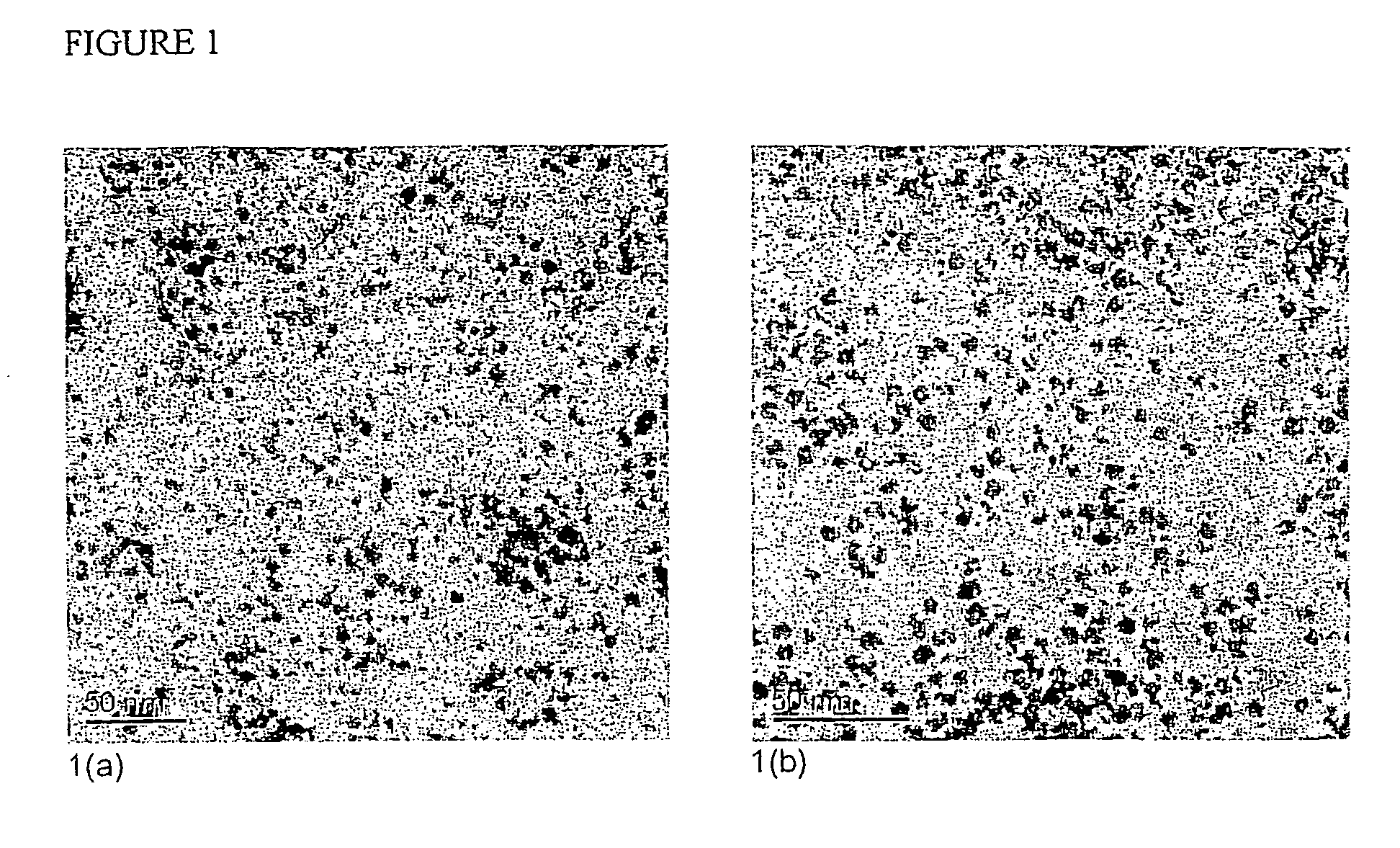Magnetic nanoparticles and method of fabrication
a technology of magnetic nanoparticles and nanoparticles, applied in the direction of magnetic liquids, magnetic bodies, instruments, etc., can solve the problems of irreversible aggregate, limited success, and difficult application, and achieve the effect of high stability and high resistance to aggregation
- Summary
- Abstract
- Description
- Claims
- Application Information
AI Technical Summary
Benefits of technology
Problems solved by technology
Method used
Image
Examples
example 1
Apoferritin Production
[0048] This example illustrates the preparation of apoferritin from horse spleen ferritin. Apoferritin was prepared from cadmium-free native horse spleen ferritin by dialysis (molecular weight cut-off of 10-14 kD) against sodium acetate solution (0.2 M) buffered at pH 5.5 under a nitrogen flow with reductive chelation using thioglycolic acid (0.3 M) to remove the ferrihydrite core. This was followed by repeated dialysis against sodium chloride solution (0.15 M) to completely remove the reduced ferrihydrite core from solution.
example 2
Synthesis of Cobalt / Platinum Nanoparticles within Apoferritins
[0049] Apoferritin was dispersed in either 0.05M 4-(2-hydroxyethyl)-1-piperazineethane-sulfonic acid (HEPES) buffer, buffered to pH 7.5-8.5 or 0.25M AMPSO buffered to pH7-5.8.5. Aliquots of 0.1M cobalt (II) acetate solution and 0.1M ammonium tetrachloroplatinate (II) solution were then added and the mixture stirred at a temperature between 35 and 50° C. This was followed by reduction using sodium borohydride. A number of metal salt additions and subsequent reductions were performed to obtain apoferritin in which the cores were substantially occupied by Co / Pt crystals.
example 3
Synthesis of Magnetite Particles within Apoferritins
[0050] Apo-ferritin was dispersed in 50 mM 3-([1,1-dimethyl-2-hydroxyethyl]amino)-2-hydroxypropane sulphonic acid (AMPSO) buffered, adjusted to pH 8.5 and the temperature maintained at between 40-70° C. Aliquots from solutions of ammonium iron (II) sulphate (25 mM) and trimethylamine-N-oxide (25 mM) were added incrementally to the apo-ferritin solution. The aliquot of iron (II) added was equivalent to 100 atoms per apo-ferritin molecule. The increment interval for the addition of aliquots was approximately 15 minutes. Additions were made until the apo-ferritin cores were substantially occupied by magnetite cores. The solution was then dialysed against water and filtered through 0.2 um filter before concentrating or using as prepared.
PUM
| Property | Measurement | Unit |
|---|---|---|
| pore size | aaaaa | aaaaa |
| pore size | aaaaa | aaaaa |
| pore size | aaaaa | aaaaa |
Abstract
Description
Claims
Application Information
 Login to View More
Login to View More - R&D
- Intellectual Property
- Life Sciences
- Materials
- Tech Scout
- Unparalleled Data Quality
- Higher Quality Content
- 60% Fewer Hallucinations
Browse by: Latest US Patents, China's latest patents, Technical Efficacy Thesaurus, Application Domain, Technology Topic, Popular Technical Reports.
© 2025 PatSnap. All rights reserved.Legal|Privacy policy|Modern Slavery Act Transparency Statement|Sitemap|About US| Contact US: help@patsnap.com

